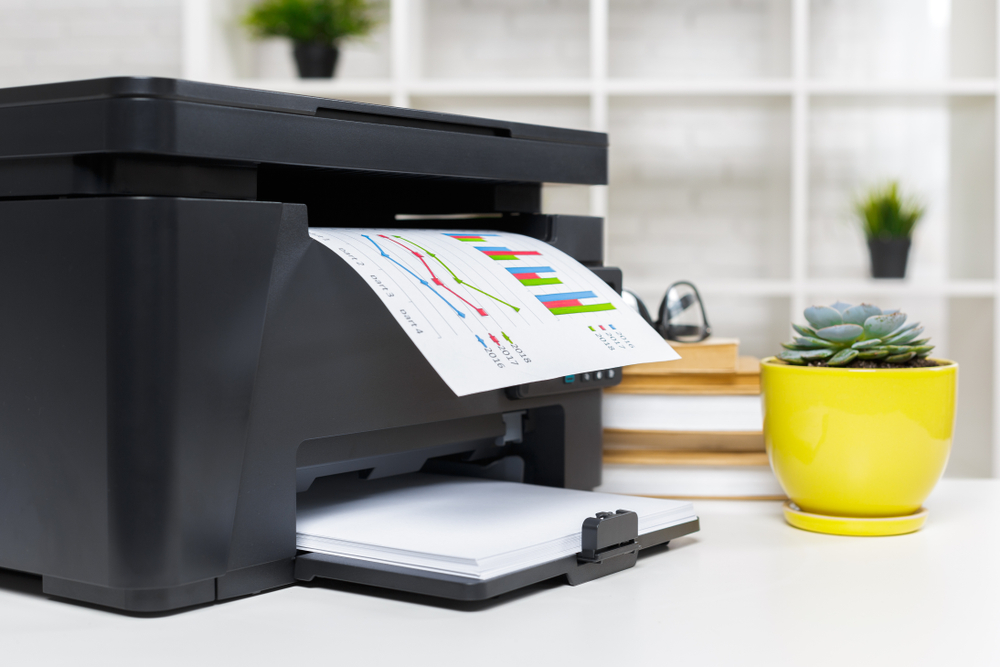Anyone who has worked in a modern office knows the importance of scanning and sending documents. Having an unreliable desktop scanner can be the bane of any office, since, despite the increasing digitalisation of paperwork and documents, you need to perform your work, actual paper documents still have a large role to play in our modern workplaces. They obviously need to be cataloged and available in an online fashion, however, and that’s where document scanners come in!

So, if your office has a desktop scanner that you feel is somewhat underutilised, you might be wondering how to make it easier/more accessible. Here’s everything you need to know to get the most out of your scanner.
What Kind of Scanner Do You Need?
While most people are probably somewhat satisfied by their office equipment by default, it’s also likely that there are better alternatives out there. There are many different types of scanners, including specialist scanners, sheetfed scanners, and all manners of business and consumer models.
Many offices don’t bother getting the scanners that are outfitted for higher paper volume usage, and we can understand why. Desktop or networked scanners that can be used to scan mass amounts of documents at once or can be used by multiple people simultaneously might seem a bit excessive or unnecessary.
However, if you find that your office is regularly getting held up in the scanner line, then it might be worth considering an upgrade.
If scanning is a big part of your day in the office, then a consumer model isn’t going to cut it. Regular desktop scanners are intended to be used by one person on a daily basis — it’ll be easy to overload if multiple people are using it every day to scan dozens of pages worth of material.
When choosing whether or not to upgrade your office’s scanner, keep in mind how much it’s going to be used. If the answer is quite a bit, consider a step up.
So, How Do You Maximise Efficiency?
Scanner Basics
If you have your ideal scanner already, then you’re probably wondering how to make sure it lasts as long as possible and continues to function as it’s supposed to. The answer to that sounds simple, but is harder to put into action: Use it properly.
Every desktop scanner comes with detailed instructions on maintenance and operation, but these instructions usually fall by the wayside once someone gets the hang of things. Scanners need to be treated properly if you want them to have a long lifespan, and that means a number of things:
- If you have a scanner/printer, ensure ink cartridges are being replaced regularly. Make sure to only use cartridges approved by the manufacturer, as knockoffs or third-party cartridges can leak and damage the scanner’s interior parts.
- Clean the parts regularly. Scanners occasionally need to be disassembled and put back together and have their parts cleaned. Ensure this happens at least once every few months, or else you’ll notice a distinct decline in efficiency and usability.
- Always follow instructions. Don’t feed documents in the wrong way or use a scanner with wet hands — simple things like this usually won’t affect your scanner’s health, but too much of the wrong thing will leave you without a scanner to use before you know it. Always read the instructions to make sure you’re not doing things improperly.
These are really the three biggest things to remember. Keep things clean, follow instructions, and for scanners that use ink, make sure you use approved cartridges.
The Advanced Stuff
Now, there are a few outside tools you can utilize to ensure your scanner is up to snuff. These include software tools that will monitor your scanner and ensure your scanner is up and running. For example, the Scanner Manager from Kodak Alaris provides proactive alerts, reduces downtime, delivers operational insights, and enables you to improve the productivity of the capture workflow across your entire organisation.
While you may not think it’s a big concern, scanners can be targeted by cybercriminals just like any other device connected to the internet, so it is also important that they have security features included.
Scanners are more intelligent and have come a long way in terms of what you can do with them.
While your experience with scanners may be limited to simply scanning a document and emailing it to someone, what happens when you need to scan a messy, handwritten document? Or one with stains on it? Or one with unusual image contrast that just won’t show up clearly?
This is where advanced scanner software can come in handy. Tools can isolate messy manuscripts and highlight the area to make things more legible, color-correct images to make them more visually pleasing, and more. Different scanner brands use different kinds of software, so keep a lookout to see if your scanner has any software available to make using it an easier experience.
Manage Your Documents
One of the best ways to get the most out of your desktop scanner is to make sure you’re using it properly. You might be surprised to find you’ve been scanning the same document multiple times throughout the day due to poor management or using an incorrect format due to some strange default setting.
To ensure you’re always on top of things, we recommend using a desktop scanner that integrates with a document management system to help you keep track of scanned documents in a clear manner.










Discussion about this post